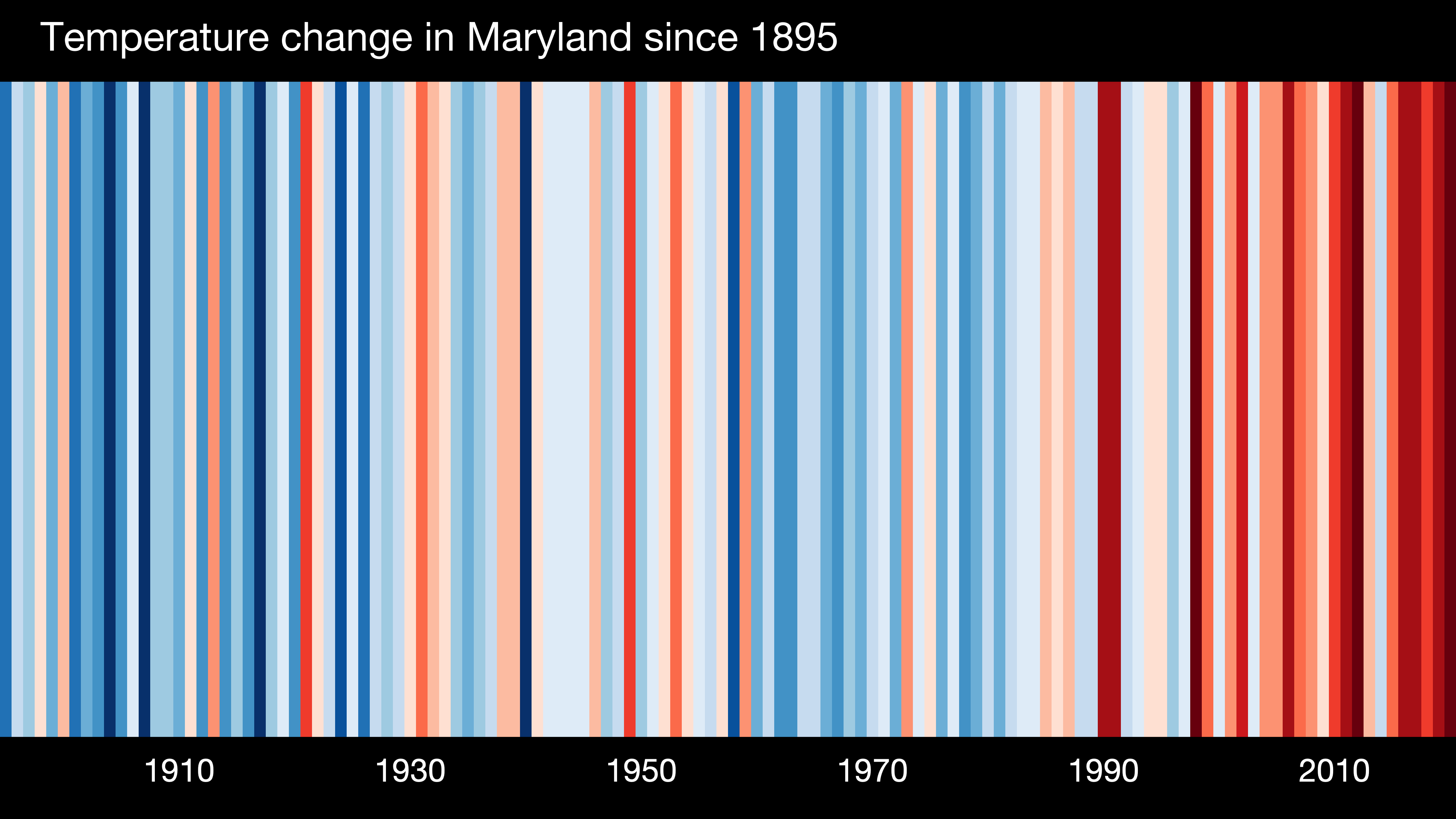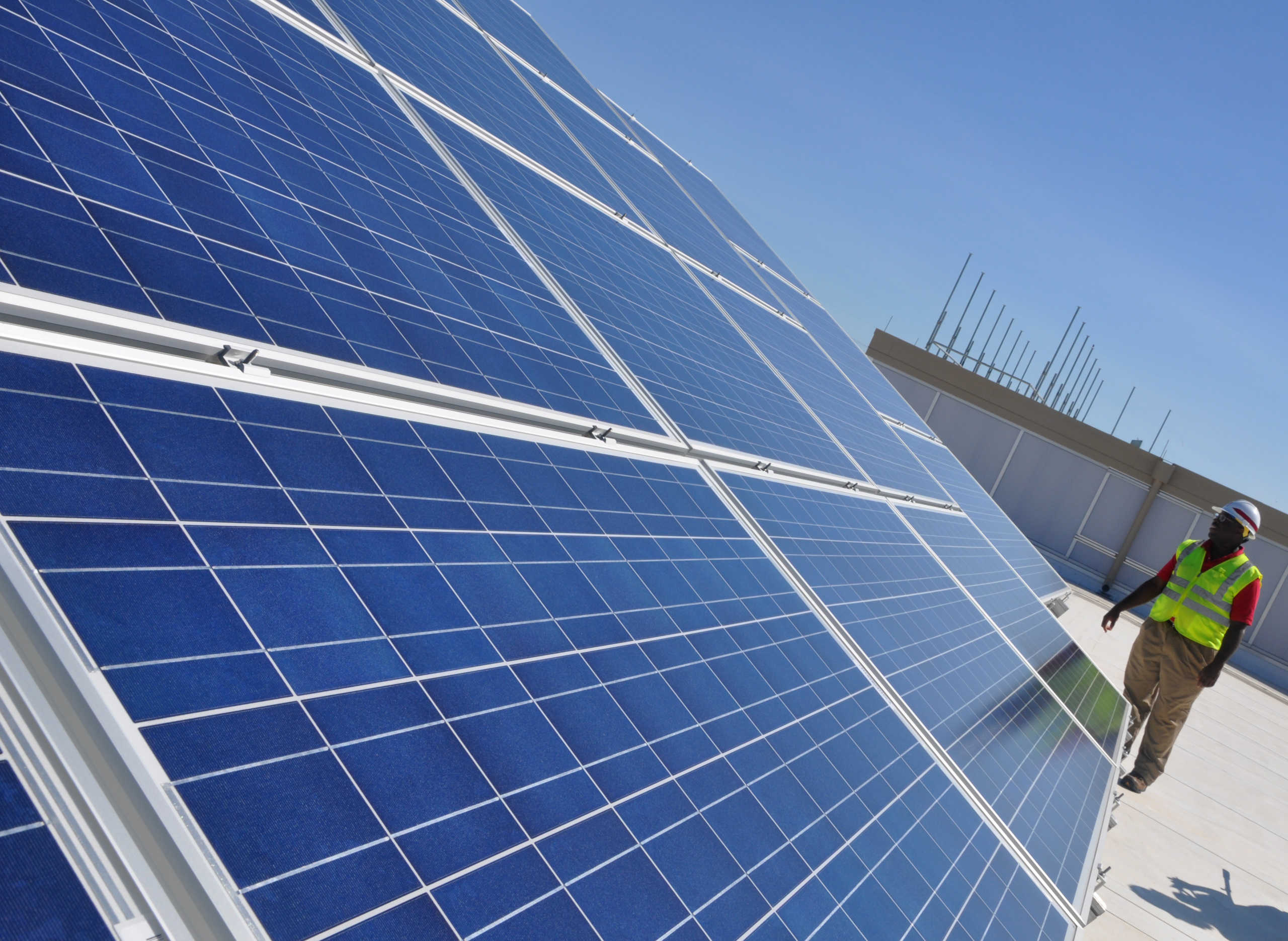
Maryland Lawmakers can Pave the Way for Dramatic Reductions in Climate Emissions
As global temperatures continue to rise, we can observe the impacts of climate change firsthand: polar ice caps are melting at record rates; many regions are experiencing some of the most severe weather events in history; water levels are rising and encroaching on shorelines. This is why states like Maryland are implementing groundbreaking climate policies to counteract and reduce the effects of climate change. This is why we need bold policies to counteract these trends. Fortunately, we’re beginning to see these policies from states like Maryland.

Image courtesy of Warming Stripes by Ed Hawkins, University of Reading
Each stripe represents a yearly temperature anomaly based on the 20th century average, with blue shades indicating cooler temperatures and red shades indicating warmer temperatures.
As global temperatures continue to rise, we can observe the impacts of climate change firsthand: polar ice caps are melting at record rates; many regions are experiencing some of the most severe weather events in history; water levels are rising and encroaching on shorelines. This is why states like Maryland are implementing groundbreaking climate policies to counteract and reduce the effects of climate change. This is why we need bold policies to counteract these trends. Fortunately, we’re beginning to see these policies from states like Maryland.
Current research indicates that human activity is the main cause of climate change. The composition of Earth’s atmosphere is significantly changing due to greenhouse gas (GHG) emissions. In November 2018, a U.S. federal climate assessment report stated that “climate change is affecting the natural environment, agriculture, energy production and use, land and water resources, transportation, and human health and welfare across the U.S. and its territories.”
The state of Maryland is particularly endangered by the effects of global warming. Maryland has roughly 3,100 miles of shoreline, making it the fourth most vulnerable state to rising sea levels. Some of the oldest farmlands in the US are located on the Eastern Shore of Maryland. With rising sea levels and sinking land, Maryland farmers are losing acres of crops due to saltwater contamination. Scientists have forecasted an increase of up to 2.1 feet in the Chesapeake Bay by 2050.
Climate change also shifts weather patterns, increasing storm intensity and affecting precipitation and temperature trends. These impacts can threaten water quality, disturb integral infrastructure, apply stressors to local ecosystems, and limit community food and water supplies. Climate change has increased the severity of both floods and droughts in Maryland, negatively influencing the economy and overall health of communities. Flooding, in particular, cuts off vital transportation routes throughout the state. Researchers have found that of nearly 3,000 flood-related transportation incidents, 78% occurred outside FEMA-identified flood zones.
Spurred by the growing risks of climate change, Maryland adopted the Greenhouse Gas Reduction Act (GGRA) in 2009. The GGRA required the state to reduce 25% of GHG emissions by 2020, using 2006 emissions levels as a benchmark. Prior to the 2009 GGRA in 2007, then-Governor Martin O’Malley established the Maryland Commission on Climate Change. This commission was responsible for creating Climate Action Plans designed to reduce GHG emissions and mitigate the impacts of climate change. Through these initiatives, Maryland continues to be at the forefront of climate policy in the country.
Following Governor O’Malley’s work to reduce GHG emissions, the GGRA was later amended in 2016, under Governor Larry Hogan. The law changed its goal from 25% in reductions by 2020 to 40% in reductions by 2030. In 2022, the General Assembly is expected to consider updating the goals again, led by Chair Paul Pinsky in the Senate and Chair Kumar Barve in the House. Environment Maryland has joined a host of environmental groups calling on the legislature to revise the goals to increase Maryland’s greenhouse gas reduction requirements to 60% below 2006 levels by 2030 and net neutral by 2045. Furthermore, the Maryland legislature is expected to consider policies to help meet GGRA goals through building and transit electrification, including University and school bus electrification, and through measures to strengthen grid reliability and incentives residential solar.
A greener, more sustainable world requires each of us to do all we can to reduce individual environmental impact. We can do this by decreasing pollution and waste, as well as other harmful practices that are warming the planet and irreversibly changing our climate. During the legislative session, Environment Maryland will support concrete steps to move us closer to the world we want to live in – going fossil fuel free, promoting carbon-free transportation, reducing power plant pollution, and more. Our staff and our partners will weigh in on a variety of bills and policies that move our state forward.
Topics
Find Out More


Unlocking America’s rooftop solar potential

Energy Efficiency for Everyone: so we can save more and pollute less


